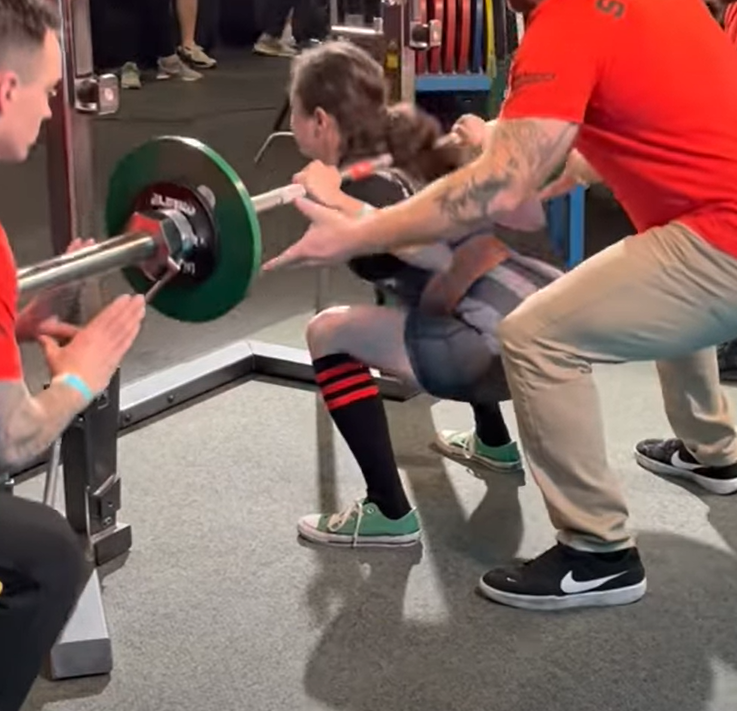The Rules for Squatting
There are two fundamental rules for squatting that every lifter should adhere to. First, the hip joint must pass below the top of the knee to ensure proper depth. Second, the barbell-lifter system must remain balanced over the midfoot throughout the movement. These principles ensure the squat is both biomechanically sound and effective.
The Squat Model
When beginning the squat, the lifter’s first task is to establish a proper back angle. This involves a coordinated movement where the hips shift backward, the chest tilts downward, and the knees move forward. Once the back angle is set, the hips and knees continue working together to lower the lifter until the hip crease reaches the required depth.
At the bottom of the squat, the movement reverses during the ascent. The lifter maintains their back angle initially as they rise, ensuring control and stability. As the lift progresses, the back angle gradually opens until the lifter achieves full lockout, with the knees fully extended and the hips nearly locked. When handling heavier weights, the lifter may need to lean forward slightly to maintain balance. This adjustment is achieved by keeping the hips slightly unlocked, allowing for better stability and positioning under the load.
A helpful way to visualize this process is to imagine a wall placed directly in front of the knees. As the lifter descends, the knees move forward until they “touch” the imaginary wall and stop. From this point onward, the knees should remain stationary, both on the way down and during the ascent. This visualization can help maintain proper mechanics and prevent excessive forward knee travel.
Key Factors Affecting the Squat
The way a lifter executes their squat can vary significantly depending on two main factors: bar position and individual anthropometry.
Bar position plays a crucial role in how the squat is performed. For example, in a low bar squat, beginners are often encouraged to let their chest point downward, which facilitates greater hip engagement. In contrast, the front squat requires lifters to keep their chest upright and their elbows high. This positioning minimizes forward movement during the ascent and places more emphasis on the quads.
Anthropometry (or the proportions of a lifter’s body) also has a significant impact on squat mechanics. A lifter with a short torso and long legs may need to adopt a wider stance to maintain balance and keep the barbell positioned over the midfoot. When they are squatting in a low back position they will have more of a tendency to bend over further. Because of these proportions it will often lead to a greater hip angle change, requiring adjustments to the setup. On the other hand, a lifter with a long torso and short legs might exhibit a similar back angle across both high bar and low bar positions. For them, the smaller hip angle change makes balancing the bar simpler, requiring fewer adjustments.
What You Should Know
It’s important to recognize that no two squats will look identical. Differences in body proportions and bar positions mean that lifters will naturally develop variations in their technique. However, as long as the two primary rules are followed—achieving depth with the hip joint below the top of the knee and maintaining balance over the midfoot—the squat will be effective and safe.
Lifters are encouraged to experiment with their setup, including bar position and stance width, to discover the configuration that best suits their unique anatomy and allows for optimal performance.


